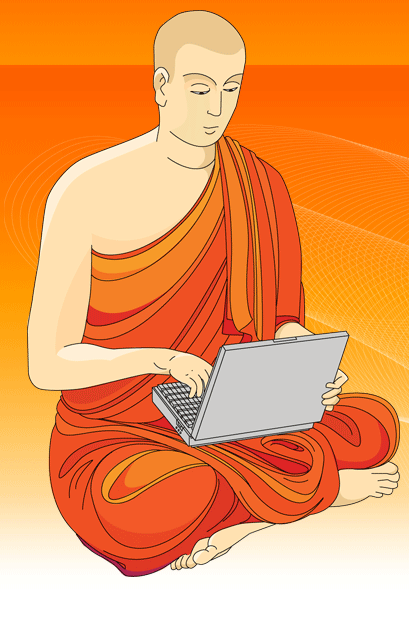As I mentioned in a previous post, I am working on a series of UX studies over the coming months to gain a better picture of the experience of users of our library's services. I didn't want to cast the net too wide, because there is ongoing research by others on the experience of students using all of the libraries available to them, how libraries fit into their working lives etc. Also the final result of these studies will be a report that I will present to the Librarian of this college library with my recommendations for what we might do to improve user experience, so while a broader view will come into it, the focus of the study is on this library in particular.
Since there was some interest in what I've come up with, I'm posting a condensed version of the study design here and I will hopefully have the opportunity to do periodic updates on the results.
The core areas of investigation:
1)
What
emotional relationships do users have to the college library?
2)
Where
are we best at meeting needs/wants? Where are we failing?
3)
What
insights can we gain into our role in students' academic lives?
4)
What
goes on in the library?
5)
How
do people relate to the spaces/services in the library?
Study 1: Feedback Wall
Based on the
Speaking Wall introduced by Andy Priestner on the UKAnthroLib blog, the first phase of the study is a feedback wall in the library. This is already in place and has been ongoing since early February. I have been tracking the responses and while there have been quite a few issues that we could not resolve immediately (lack of water fountain, temperature, etc.) we have introduced quite a few new things to the library as a result, including new hand dryer for the male loos, pens on chains for the catalogue computers and we have ordered external DVD drives that will be borrowable by people whose laptops or tablets cannot play DVDs or CDs, since we have a large collection of both.
Anecdotally, I have noticed a slight increase in the number of people approaching the desk with queries since introducing the feedback wall and potentially they are approaching in a more open and friendly way (though it could be that my tyrannical campaign of saying hello to everyone who comes into the library is finally paying dividends).
Study 2: Issue Desk query tracking
On a sheet of paper, staff at the issue desk will put a tally mark under the most suitable category each time they are approached with a query. The categories are: Basic directional, Borrowing queries, Requesting supplies, Technology queries, Help finding a resource, Procedural and Other, with a blank space for noting down, if time allows, the specific query.
This study is primarily to supplement the others. I think it would be interesting to know what people are coming to a member of staff for in order to highlight what points of friction for which they are not coming to a member of staff. I wanted something really simple that would not be time-consuming for the front-line staff and the Cambridge University Library does something similar on an annual basis. I thought it would dovetail nicely with the rest of the studies.
Study 3: Student survey
Last year was the first year the library made any formal attempt to gather user feedback, which we did using a survey sent out to the entire student body. We had very good response thanks to offering an incentive for one person to be drawn at random (£25 Amazon voucher). The results were very interesting and led to a lot of small but cumulatively significant changes in the library for this academic year. This year we intend to do the same, but I am tailoring some of the questions toward specific things we want to know, like how many people know about various services we offer, how people would want to use the library if we had 24 hour opening and how they feel about non-borrowable duplicates of popular texts.
The advantage of surveys is their ability to get data from a large and broad sample of people. However, we learned last year that too many open-ended questions of that many people gives a muddy picture. In the end I spent hours and hours coding written responses in order to help them fit in with the quantitative data I was presenting. I did use specific responses to highlight the issues raised, but that data lacked depth. Therefore, I've kept open-ended questions to a minimum, though I did still want to give people the chance to leave written feedback if they did not feel comfortable using the feedback wall. The survey will be emailed to students near the end of Easter Term and once again an incentive will be offered, to be drawn at random.
Study 4: Behavioural mapping
This study comes from the lady herself, Georgina Cronin, UX Librarian at CJBS. Over the course of a couple of weeks she sat for hour long shifts in the library and observed 1) where people went, 2) what they were doing, and 3) how long they did it for. She mapped this information onto a plan of the library and created both a heat map and a coded map of different activities in the library.
This is going to be more challenging to do in my library as it is difficult to see multiple parts of the library at once. I may have to break it down into specific areas. However, I think it's worth doing because the library is not overlooked by staff so we don't really have any idea about behaviour in the library. At the very least I would like to make a heat map of where people sit most often and whether they are studying individually or working as groups, even if I'm unable to map activity and continuous flow through the library. This could give us an idea about where the most desirable seats are, how much the library is used for browsing, reading, writing and other activities respectively and whether any areas are conducive to group work.
One of the main challenges here is being unobtrusive. There is very much the feeling that the reading rooms are student spaces, such that when staff do walk through we draw a lot of attention. As a recognisable member of staff, will I be creating a distraction and/or changing the way people behave in the library? I'm still undecided about whether I want to try to do this by walk-through or by sitting in the library for long stretches as Georgina did. This might have to be a study that evolves as I learn what works in the space and what doesn't.
Study 5: Photo diary study
This is the study about which I'm most excited. It was mentioned in Georgina and Meg's class and was developed from
Foster et al., though I have seen it in a few places, each time in a slightly different form. I plan to recruit about 5-8 students to photograph pre-made signs in locations they think fit the content of the signs. Several of them have blanks to fill in, so students can express frustration, boredom, annoyance, positivity, affection, and so on. The signs read:
I
____________________ THIS PLACE IN THE LIBRARY BECAUSE
I
_____________________ STUDYING/ WORKING HERE BECAUSE
WHEN I NEED A
BREAK FROM WORK I COME HERE
WHEN I AM WORKING
THIS IS PRETTY MUCH
ALWAYS NEARBY
EVERY TIME I USE
THIS I FEEL ________________________
THIS IS SOMETHING
I WOULD SHOW A FIRST YEAR IN A TOUR OF THE LIBRARY BECAUSE
I will encourage participants to use as many or as few of them as they would like and to be as creative as they would like, taking photos within and outside the library with their own devices. As this is a more labour-intensive study for participants, each one will receive a gift card but will also be told that they have the right to leave the study at any point and dictate how their photographs are used. After the photographs are returned to me I will have a short interview with each participant to discuss what they chose and why.
I'm hoping that because I am in contact with the Student Union president, who is very enthusiastic about working with the library to make improvements, recruitment will be a bit easier. I really look forward to seeing what people come up with on this, though.
Study 6: Storytelling/Open-ended interview
This study will be the last one I do so that I have time to build my own confidence and look at gaps in our understanding of our users. It is the most purely qualitative and the one for which I can do the least planning. Ideally, I would like the interviews to be a kind of conversation shaped by the interviewee, focused on their experience of using the library. This will hopefully generate very in depth information about how individuals relate to the library, problems they've had that we haven't found out about, how the feel about the space and the experience and so on.
 |
| Feedback spectrum: The types of feedback I expect to be generated by each study. |
As you can seen from the chart above I have placed each of these studies on a spectrum based on what sort of feedback I would expect to be generated from each study. I did this to ensure that I was not looking solely at one type of data, nor at one aspect of the library experience but that I am building a relatively broad picture of library users.
The horizontal axis is adapted from the
AEIOU framework discussed at the UXLibs conference and is also somewhat based on the discussion of the difference between tasks and goals in libraries. Tasks are finite and explicit, while goals are more implicit and harder to design for, but a successful library design takes into consideration users' goals as much as their tasks. Helping users achieve goals is the difference that makes some libraries great and others kind of "meh". It's much harder to put your finger on, but that's where qualitative data is especially useful.
Caveat (more for myself than anyone else):
It's important to remember to be flexible. While I have tried to design these with a spectrum of feedback in mind, I feel it's important to let the studies reveal things organically rather than forcing the results to conform to my expectations. This is my first time doing any UX/ethnographic studies so this is a learning experience for me and while I tend to like to rely on planning things to death before I do them in order to feel as prepared as possible, I need to make sure I'm open to going with the flow.
These studies are pretty much all based on the work of others so if I have failed to give proper credit I apologise.
Anyway, that's the plan as it stands at the moment! It's possibly a little ambitious for my first foray into UX studies but you don't learn anything unless you try.










